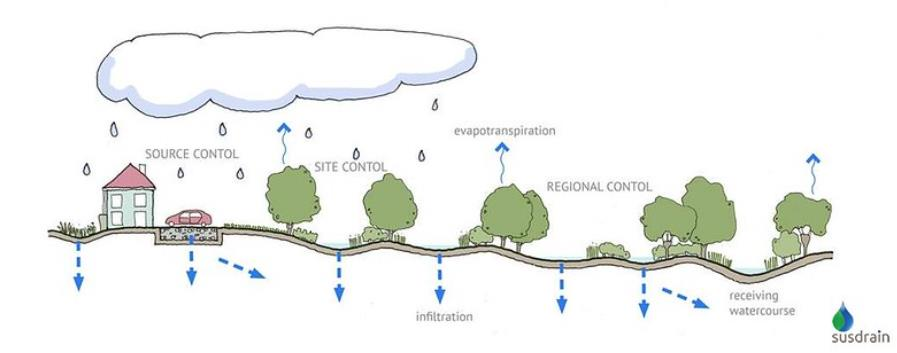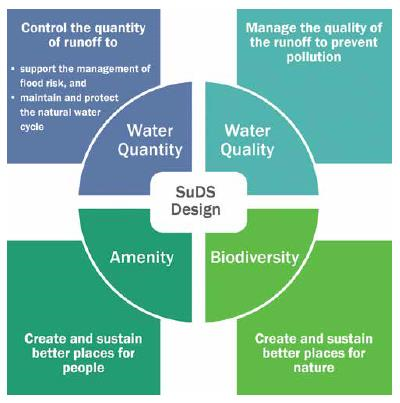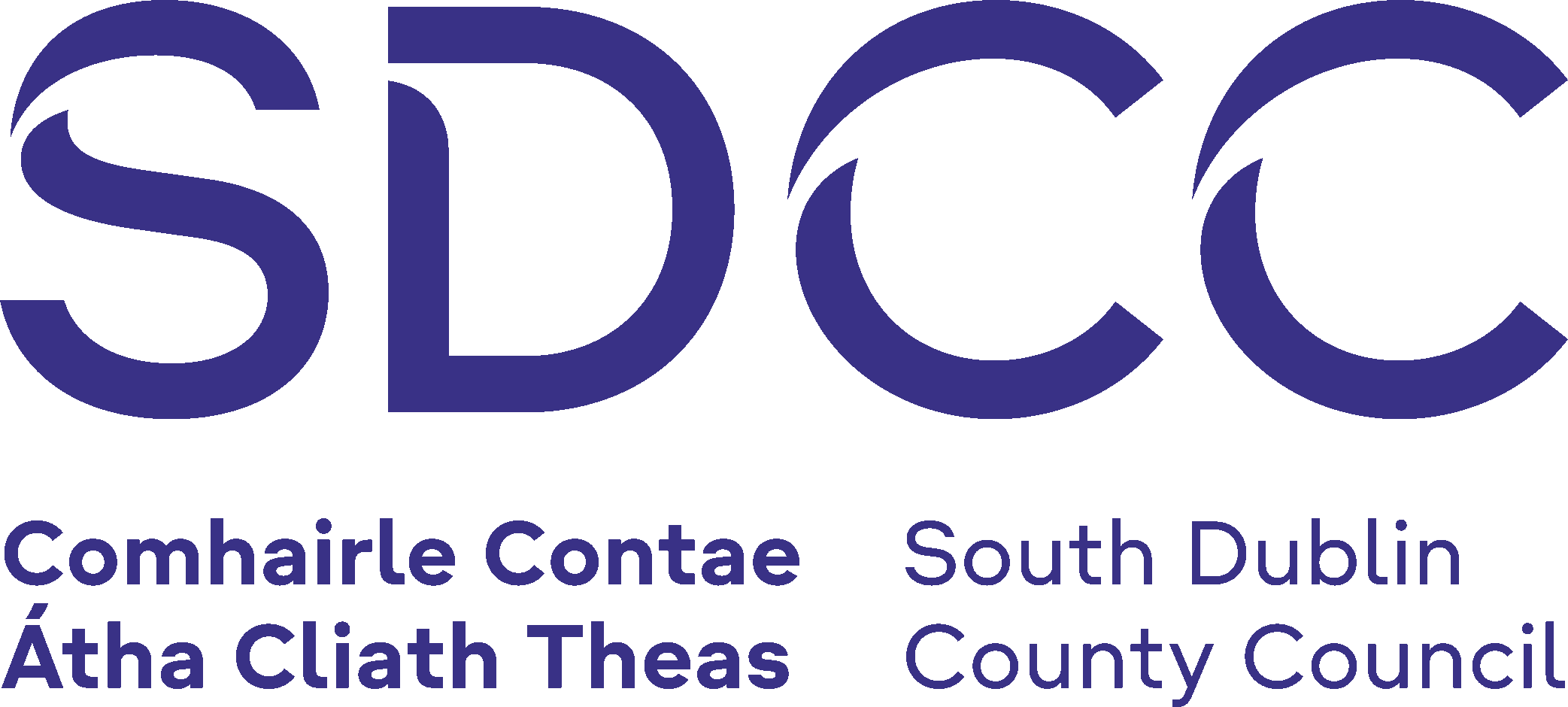Submission of Planning Applications - Water & Drainage Considerations
All proposed developments submitted for planning in South Dublin County Council shall conform to the following documents:
- SDCC Sustainable Drainage Explanatory, Design and Evaluation Guide 2022 Incl. SuDS Details(PDF - 15 MB)
- Uisce Éireann Standard Details and Code of Practices
- Greater Dublin Regional Code of Practice for Drainage Works
and the GDSDS policy documents , in particular the following:
GDSDS Policy 2: New Development (PDF, 6.1 MB)
GDSDS Policy 3: Environmental Management (PDF, 100 MB)
GDSDS Policy 5: Climate Change (PDF, 6.4 MB)
Information on Public Water Mains & Sewers
Please contact the Drainage Design Section where maps are available from servicemaps@sdublincoco.ie. To arrange a connection to a public water supply or wastewater sewer, please contact Uisce Éireann. More information on the Uisce Éireann connection application process is available at: https://www.water.ie/
Sustainable Drainage Systems (SuDS)
Traditional surface water drainage systems are typically “Hard Engineered” solutions used in drainage design. They convey runoff through pipes and large underground storage tanks to store and attenuate surface water. These systems effectively bypassed the natural buffering effect of vegetation and soils. As a result of these types of drainage solutions, post-development surface water run off rates and discharge volumes increase significantly and polluted runoff from impermeable areas are not effectively managed prior to discharge to receiving watercourses.
Sustainable Drainage Systems (SuDS) greatly improve upon these issues by allowing a more sustainable and natural surface water drainage regime to be implemented. SuDS offer multiple benefits when compared to traditional drainage systems and aim to maximise the benefits of rainwater once it falls on the surface. SuDS not only improve the quality of surface water runoff and decrease runoff volumes but also improve certain aspects of developments such as biodiversity, public amenity and make areas more visually attractive and vibrant. They can help combat the adverse effects of climate change by reducing temperatures at street level in urban areas and reducing volumes of rainfall-runoff which can aid to alleviate flooding issues. SuDS can best be summarised as offering a “total” solution to rainwater management while traditional drainage can be considered as only providing a “collection and disposal” approach.
There are many different types of SuDS features. Well-designed SuDS incorporate a “SuDS management Train” which manages rainfall as close as possible to where it falls on the surface using natural drainage features ideally incorporating vegetation. The surface water runoff then passes through a series of both local and regional SuDS systems before finally discharging to the receiving watercourse or surface water drainage network at predeveloped greenfield runoff rates. SuDS are not limited to new developments and can be retrofitted into existing developments also.

The four main objectives (pillars) of Sustainable Drainage Systems (SuDS)

Water Quantity
- Manage and control runoff volumes and flow rates from impermeable surfaces, reducing the impact of urbanisation on flooding
- Provide opportunities harvesting rainwater run for use close to where it falls
- Promote groundwater and aquifer body recharge
- Protect natural flow regimes in watercourses
- Encourage evapotranspiration from planted and other storage areas
Water Quality
- Maintain and where possible improve water quality by reducing occurrences of polluted rainwater runoff
- Establishes a treatment train for water conveyance using sustainable, natural means.
Biodiversity
- The water within a SuDS scheme is vital for the growth and development of plants and animals. Biodiversity benefits can be delivered by even small, isolated components, but the greatest value is likely to be delivered where SuDS are planned as part of wider green landscapes and they can assist with wildlife connectivity.
- Provide attractive habitats for flora and fauna near watercourses for feeding and nesting.
Public Amenity
- Water adds to the attractiveness of an area.
- The presence of water allows people to have an increased connection with nature
- Creates more interesting landscapes for play and recreation
- Can improve air quality
- Carbon reduction and sequestration
Examples of Sustainable Drainage Systems (SuDS)
_Page_4.png)
Useful SuDS Related Sources
- SDCC Householder’s Guide to Sustainable Drainage (SuDS).pdf (size 4 MB)
- Ciria C753 SuDS Manual – Visit https://www.ciria.org for more information
- Susdrain- “The Community for Sustainable Drainage”
- Greater Dublin Strategic Drainage Study (GDSDS) - Volume 2 - New Developments
- Greater Dublin Regional Code of Practice for Drainage Works
SuDS Papers and Articles
- SuDS - Article by Brian Hennelly [PDF 50 KB]
- Article on Irish SuDS Website (Kellagher & McEntee, January 2008) [PDF 663KB]
- DCC Green Roof Draft Guidelines (September 2008) [PDF 1.6MB]
- Living Design - Green Roofs (Lenni Antonelli, November 2008) [PDF 1.5 MB]
- Living Roofs and Walls: Technical Support, Supporting London Plan Policy (External Link, PDF 2.6 MB]


_Page_5.png)